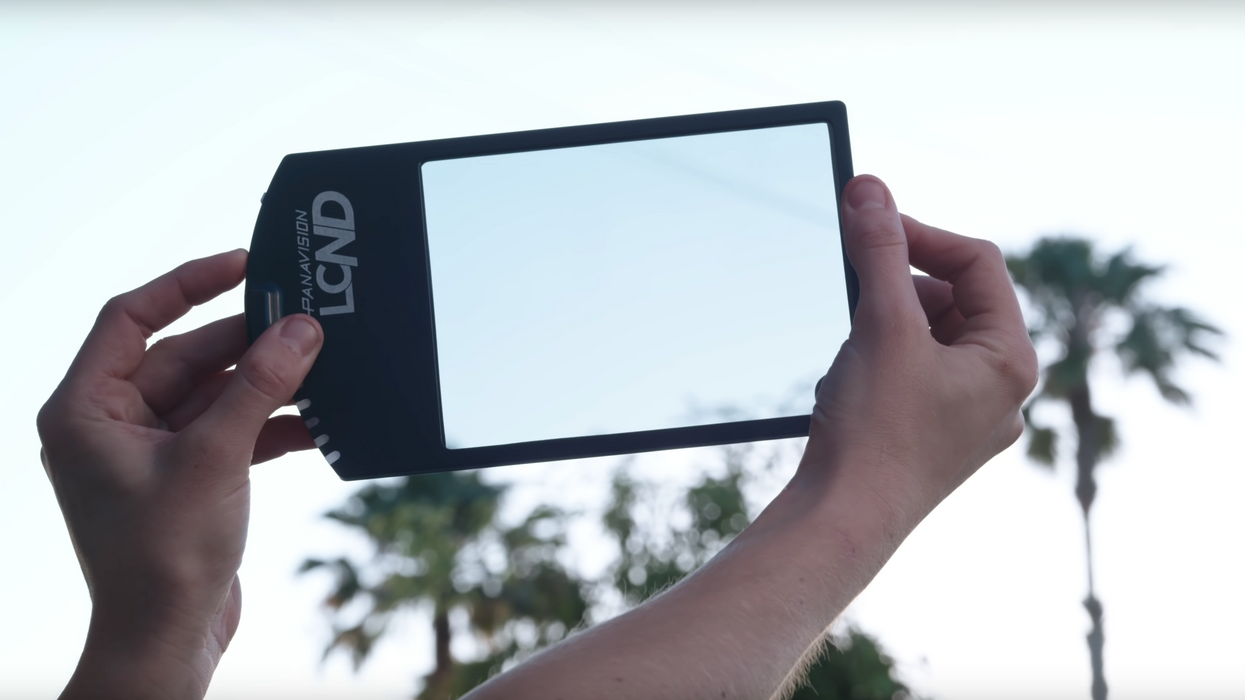All the NDs You Need in One Liquid Crystal Filter from Panavision
The new liquid crystal (LCD) ND filter from Panavision not only gives you all the stops of ND you need in a single filter but lets you control it all remotely.

Neutral Density (ND) filters, which darken the entire area of the frame evenly without any color cast, are a vital part of cinematography.
Yes, you can affect exposure through changing the aperture, but that also changes the depth-of-field. You can change the camera sensitivity, but that effects noise levels. Changing shutter speed affects motion blur.
If you want to keep the depth-of-field, noise, and blur consistent shot to shot for matching (which most cinematographers do), you need to use ND filters to maintain consistent exposure in changing lighting conditions. This has traditionally required taking out a full set of a variety of ND filters until the new LCND from Panavision came along.
By using liquid crystal technology, the same technology in your LCD monitors, Panavision now offers users the ability to have up to 6 stops of ND, all variably controlled, in a single filter.
Since ND3 is a single stop of filtration, which is like carrying a kit of ND 3, 6, 9, 1.2, 1.5 and 1.8 all in a single filter. It has an internal battery, meaning it doesn't need to always be plugged in to work, though it can be plugged into the camera for power. That camera power always comes with control, which is super cool.
The Panavision DXL platform has internal lens control, meaning that you can easily rack aperture with a camera from the internal camera menu's. Now, with the camera controlling the ND filter, you can sync that ND filter rack to match the aperture rack, maintaining an absolutely perfect, consistent exposure while the depth-of-field changes.
On top of the cable control, there is also pushbutton finger control for situations where you are working without it being plugged into a compatible battery, or are just shooting fast and want to be able to click a physical button and not worry about mucking about in internal camera menus.
Frankly, the biggest news here is the "Panavision" name. Panny has always focused on the top end of the top end of the industry, and they wouldn't release a product that won't serve those customers. The biggest battle with ND filters is making sure that the filter doesn't introduce any color cast at any power, since top end cinematographers will be the pickiest about noticing very slight color variations shot to shot with different ND levels.
By offering a liquid crystal ND Panavision has to be very confident that this will be perfectly color matched all the way from "clear" to "ND1.8," which is a huge endorsement for liquid crystal technology. We can't wait to see these out in the field and put it through some testing, all the way through to the final grade since this is sure to be a popular item on Panavision shoots in the near future.
No Film School's complete coverage of CineGear 2019 is brought to you by:
Blackmagic Design, and Fyrfly.
Check out more of No Film School's coverage from CineGear here.













![Ethos, Pathos, Logos: 20 Effective Ways to Advertise [Infographic]](https://nofilmschool.com/media-library/ethos-pathos-logos-20-effective-ways-to-advertise-infographic.jpg?id=34064614&width=600&height=600&quality=90&coordinates=560%2C0%2C0%2C0)

